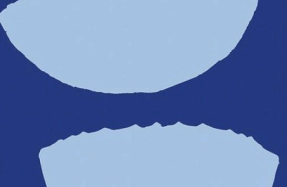Prue Venebles: Evolving form in a domestic landscape

London
I met Prue Venables when she was a student on the Harrow Pottery course in the early 1980s, when I was invited by the course director Jerome Abbo to teach one day a week. I did not teach her ceramics − I was the wrong sort of potter to be employed in the clay studios, where the wheel was still the main focus. But I did run writing projects with the students and drawing workshops alongside Andrew Greaves. It was a period of creative expansion, when the course was broadening its interests beyond the bulk production of handmade tableware that had been its emphasis in the 1960s and 1970s. It was clear that Prue loved being a student there and immersed herself in all aspects of it; she was respected for her strong work ethic and openness to teaching, to trying things out, almost as if they were experiments in a lab. And she made long-term friendships with staff and students.
I was sharing a studio near Kings Cross in a small railway arch with an Australian illustrator called Noela Hills, and when she left to go back to Brisbane in the mid-1980s, I asked Prue, who was graduating from Harrow, if she would like to move in. She had the top floor on the hefty wooden platform and I worked underneath near the kiln. By this time I had two small daughters, and she was about to marry an Irish baritone.
It was apparent straight away that she brought many useful skills with her; we had our different priorities in clay processes, but her understanding of science, her retention of facts, and her broad practical sense was a big contribution. She got on with things, without fuss. Her quietly easy-going nature, her attentiveness to details, and her good listening skills both for words and music were also an undercurrent of our friendship.
We worked in the arch until 1986, when we jointly bought a de-koshered butcher’s shop in east London in Stamford Hill. After a bit of renovation, to the basic level of 1980s creative optimism, Prue and her husband lived in the flat above, and she and I worked in the studios below. We had four rooms within the shop, a small yard behind a high brick wall, and a garage full of ancient shelving and shop-fitter’s drawers. In the early days at Windus Road our sharing of the space was a creative interaction as well as a friendship. We were a grubby duo in overalls renovating the space in the early months, through the summer of 1986.
One of the neighbours, working in the newsagents opposite, thought I was Prue’s mother, though we are less than a decade apart in age. I still work in that studio today, and Prue comes to
You’re reading a preview, subscribe to read more.
Start your free 30 days



